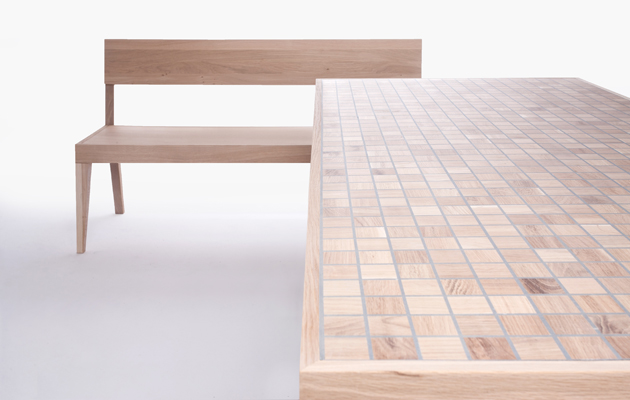|
|
||
|
Capitalising on his experience as creative director at Habitat and head of design at John Lewis Home, Theo Williams launches Another Brand, a new business model that joins up designer and manufacturer. See the collection during Clerkenwell Design Week at Icon’s House of Culture When working in Milan, designer Theo Williams spend endless hours in factories, tinkering with processes and collaborating with manufacturers to twist their capabilities to suit his ends. Marrying this experience with his knowledge of the high-street marketplace, he has launched Another Brand, a new model that enables manufacturers to create their own brands. Starting with furniture, the aim is to branch out into textiles and accessories, all designed by Williams to play to the strengths and capabilities of each of the partner manufacturers. Both parties share the overheads initially and then share the profits, increasing margins while also lowering the price for the consumer. Cubo, the first sub-brand from Another Brand, is produced by Qualita, a high-end furniture manufacturer based in London and Lithuania, which produces pieces for John Lewis, Habitat and Laura Ashley. Following this launch, the idea is that more manufacturers will be brought on board to develop complementary products, creating a raft of smaller rangers that sit under the Another Brand Umbrella. Icon caught up with Williams to explore the concept. ICON: What was the driving factor when setting up Another Brand? Theo Williams: I’ve been in and out of factories over the years, so I’ve worked with some great manufacturers. Predominantly they’re suppliers – they produce for other brands and retailers and don’t have their own brand. Given the way the industry works in terms of costs and margins, I thought it would be a good model to go direct to the source and team up with manufacturers, to play to our strengths and produce a brand together that goes straight to market. Of course, a lot of these companies aren’t just suppliers, they have logistical infrastructure, delivery capabilities, warehouses, so they’re really well set up to distribute and sell their own brand. ICON: Why aren’t more manufacturers developing their own brands, or haven’t historically? TW: They have. There are examples where brands have grown out of manufacturing bases. A lot of the bigger brands in Italy have their own factories. Over the years they’ve learnt from the architects and designers that originally came to them to manufacture their designs, and built up a brand themselves working with designers, like Moroso for example. More recently fewer manufacturers have developed in this way. A lot of the brands that designers work for are not necessarily manufacture-based, they use third parties and so on. And then there are designer-makers, you see a lot of them in London especially, and they’re very successful but it’s a big operation to take on with little investment. Whereas our model is simply playing to the strengths of what a supplier has already in terms of distribution and sales. There’s no point in me buying all the machinery and taking that risk, if I can work with a supplier that already has that infrastructure. ICON: How does the brand structure work? TW: We’re working with Lithuanian-based manufacturer Qualita for the first furniture range, Cubo, but we’ve got other manufacturers on board as we go forward. When we launch ceramics, textiles or upholstery, these manufacturers will have their own brand, do their own trade fairs, and they’ll sell through their channels. When appropriate, we might all come together and share a stand, so we’ve created a lifestyle brand by being experts in each field. ICON: How collaborative was the design process with Qualita? TW: Hugely. It goes back to the time I spent working in Milan, where 90 per cent of my time in the factory trying to invent something with a manufacturer rather than trying to develop a design for the sake of it. Collaboration is absolutely fundamental not just in terms of the relationship of trust but also in understanding the manufacturer’s abilities, including all their machinery and workflow. You suddenly start to see the costs and the efficiency improving, and that’s been key as you can pass that on to the consumer. In some places it might cause issues, as when you like up some of our piece next to brands with pieces twice as expensive, they’re almost identical in their spec and finish. It’s touching a nerve depending as it’s asking questions about market value or perceptions of value. I find that fascinating. Another Brand’s collection is on display at Icon’s House of Culture, 22 Clerkenwell Green, from 19 to 21 May |
Words Laura Snoad |
|
|
|
||



















